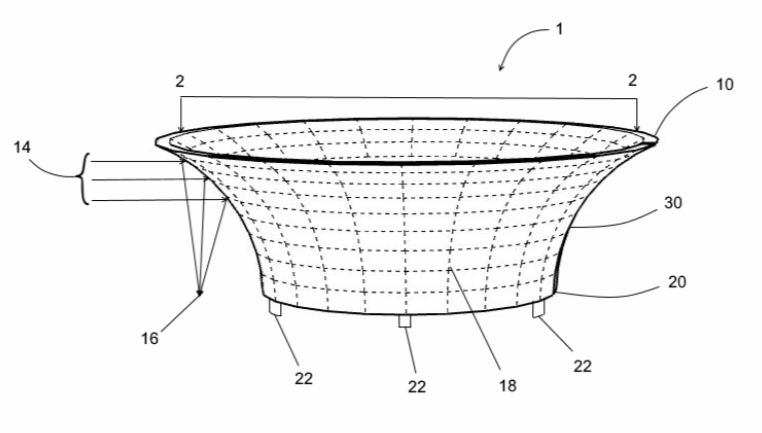We will be demonstrating our Acoustical Focus(tm) application for audio forensics, speech enhancement, and source separation at Security & Policing 2024 to be held at the Farnborough International Exhibition and Conference Center, Farnborough, UK between 12-14 March 2024.
NBC Dateline episode on the Dan Markel murder case
For those following the Dan Markel murder case (Florida, USA), NBC Dateline recently aired an episode that covered it in depth.
Announcing the launch of Acoustical Focus
Wave Sciences is proud to announce the launch of Acoustical Focus, the first application powered by the GLIMPSE(tm) computational acoustics engine for refocusing multichannel audio. Acoustical Focus was specifically designed to address the needs of audio forensics examiners and others involved in post-production speech enhancement and audio analysis.
Until now, the ability to refocus a recording after-the-fact was limited to imaging applications. Now however, audio recordings can be filtered to focus on a location - such as a single individual’s mouth or the talkers at a table - to enhance only those voices coming from there, while blurring out sounds emanating from anywhere else.
Wave Sciences Helps Develop Wash-and-Wear Smart Garment That Hears
From last week’s IARPA press release:
The Intelligence Advanced Research Projects Activity (IARPA) — the advanced research and development arm of the Office of the Director of National Intelligence — recently launched a cutting-edge program that aims to make performance-grade, computerized clothing a reality.
The Smart Electrically Powered and Networked Textile Systems (SMART ePANTS) program represents the largest single investment to develop Active Smart Textiles (AST) that feel, move, and function like any garment. Resulting innovations stand to provide the Intelligence Community (IC), Department of Defense, Department of Homeland Security, and other agencies with durable, ready-to-wear clothing that can record audio, video, and geolocation data. This eTextile technology could also assist personnel and first responders in dangerous, high-stress environments, such as crime scenes and arms control inspections without impeding their ability to swiftly and safely operate.
…
“IARPA is proud to lead this first-of-its-kind effort for both the IC and broader scientific community which will bring much-needed innovation to the field of ASTs,” said SMART ePANTS Program Manager, Dr. Dawson Cagle. “To date no group has committed the time and resources necessary to fashion the first integrated electronics that are stretchable, bendable, comfortable, and washable like regular clothing.”
Deepfake Video and Audio: Is it real or is it Memorex?
Wave Sciences Founder, Keith McElveen, will be giving a presentation at the Charleston Technology Center on Deepfake Video and Audio on Wednesday, January 18th, 2023.
Back in the days before the Internet, the Memorex Corporation ran an advertising campaign featuring the singer Ella Fitzgerald promoting its line of audio cassette tapes with the tagline “Is it Live or is it Memorex?” It opened with Ella breaking a glass using only her powerful singing voice, and then repeated the feat again using a recording of her on - you guessed it - a Memorex audio cassette. Their catchy tagline morphed over time into the saying “Is it real, or is it Memorex”, keeping it relevant to the current wave of DeepFake media sweeping over social media.
Keith McElveen, CTO and founder of Wave Sciences and a practicing multimedia forensics examiner, will be joining us to delve into deepfake multimedia, how it is done, how it is caught, and where this cat and mouse game might go from here.
For meeting information and reservations, click this Meetup link: Info&Reservations
Have we discovered how humans hear in a cocktail party?
Ever since 1953 when Dr. Colin Cherry coined the term “the cocktail party problem” to describe the mystery as to how humans are able to distinguish one voice from another in a noisy, reverberant room using only two ears, scientists have been trying to puzzle it out, without success. The mystery may now have been solved.
Researchers from Wave Sciences published a paper at the recent International Congress on Acoustics (Gyeongju, Korea) in which we hypothesized that the approach underlying our patented GLIMPSE speech separation method is a computational model for human spatial hearing.
The title of the paper was “A Proposed Signal Processing Model Of Human Spatial Hearing Using Interaural Cross Correlation and Auditory Glimpsing To Estimate Green’s Functions.”
Making Even More Waves in Murder-For-Hire Case
The following video was created from evidence released by the State of Florida in its case against Charles (Charlie) Adelson regarding the murder of Dan Markel. The video contains both pre- and post-enhancement versions of the evidence.
Enhanced Matsuri Restaurant Meeting FBI Recording: FL v. Charles Adelson (Dan Markel murder) uncut
Our Source Separation Algorithm Makes Waves in Murder-For-Hire Case
Wave Sciences’ patented source separation engine - code named GLIMPSE - was used in the ongoing Dan Markel murder case in Florida. Originally, crucial audio evidence recorded in a noisy restaurant was deemed inadmissible by the judge as it was unintelligible, even after being enhanced using the best practices and technology available. However, once GLIMPSE was applied to the problem, the entire recording was allowed. You can hear for yourself what this technology breakthrough is capable of at the YouTube link below:
TRANSCRIPT: Secret recording of Charlie Adelson released, led to arrest in Dan Markel murder case
The Acoustical Society of America's 180th Meeting
Results from recent testing of our source separation technology were presented on June 3rd at the Acoustical Society of America’s Acoustics in Focus meeting. Our founder, J. Keith McElveen, discussed the Cocktail Party Problem and how combining human-inspired glimpsing of brief auditory snippets of speech with machine learning was able to isolate the desired talkers with only 4 or 6 microphones, whether the talkers were in the near- or far-fields.
Wave Sciences announces two new patents
The US Patent and Trademark Office has informed Wave Sciences that it is issuing two new patents - one for a source-separating Wearable Microphone Array and the other for a source-separating Visible Light Audio System. These inventions are targeted at far-field speech capture and recognition in crowded, noisy, reverberant conditions with many simultaneous talkers - otherwise known as the Cocktail Party Scenario. These inventions isolate individual talkers from the babel, enabling them to be heard loudly and clearly using our patented Glimpse(tm) system and method.
A ground-breaking solution to the "Cocktail Party Problem" has been patented
Wave Sciences is pleased to announce that the US Patent and Trademark Office (USPTO) will shortly be issuing US 10,735,887 - a patent for our Spatial Audio Array Processing System and Method. This ground-breaking innovation enables a compact microphone array to extract individual voices from a cocktail party babel in uncontrolled, real-world situations - even with sound sources in-between the array and the desired talker(s). This invention is particularly relevant to conferencing systems, hearing assistive devices, and smart speakers.
Wave Sciences announces a new patent
The US Patent and Trademark Office has informed Wave Sciences that it is issuing a patent for our Portable Computing Device Microphone Array that can be added to any existing laptop, tablet, or smartphone simply by attaching a case or cover with our technology embedded within. This invention is targeted at individuals with hearing loss who need to hear remotely in noisy or distant conditions, such as students in a classroom or lecture hall.
Wave Sciences announces two new patents
The US Patent and Trademark Office has informed Wave Sciences that it is issuing two patents for recent innovations. The first patent is for a variation of our Visible Light Audio System that employs our breakthrough array processing technology. It is targeted at individuals with hearing loss that are present in the space or who are listening remotely via teleconferencing.
The second patent is a variation of our Smart Garment Hearing technology that integrates the microphones more tightly into the garment. This invention is targeted at individuals with hearing loss or who otherwise would benefit from directional audio to hear better in noise or across distance.
Wave Sciences announces two patents that enable smart speakers to hear better in noise
The US Patent and Trademark Office has informed Wave that it is issuing two patents for its novel, mechanical approach to helping smart speakers hear better in noisy conditions. The invention drew inspiration from the acoustic mirrors carved into England’s White Cliffs of Dover during the early days of World War II. Microphones were placed on a shelf below the acoustic mirrors, which were half-parabolas, to hear approaching German bombers from across the English Channel and sound the alarm. Warping the half-parabola shape of the Cliffs into a ring and then engineering the curvature and other dimensions appropriately to focus sound on a ring-shaped array of microphones led to a structure that helps popular smart speakers (you know the ones) work better in noise and from further away. And they also help the speakers sound better too!
Wave Sciences' founder speaking at The Citadel on September 25th
J. Keith McElveen will be giving a talk on Wearable Hearing at The Citadel at 4pm EDT on September 25, 2019. The event is open to the public. Details can be found at: https://events.vtools.ieee.org/m/204738
Wave Sciences' Founder on Television
Watch the 843TV interview with Wave Sciences’ founder, Keith McElveen:
A light bulb that helps you hear
Wave Sciences’ patent for visible light communications to enable businesses to easily comply with American Disabilities Act (ADA) requirements for accommodating individuals with hearing loss is now available on line at the following link:
TEDxCharleston The Future of Hearing is Loud and Clear
Wave Sciences in the news: Post and Courier article on smart garment hearing
A visible light communications patent for audio applications
The US Patent and Trademark Office has issued a utility patent to Wave Sciences for a visible light communications (VLC) audio system using compact fluorescent light (CFL) and light emitting diode (LED) bulbs. Individuals with hearing loss are expected to benefit from this innovative way to listen to recorded or live audio without the interference and fading issues of radio frequency technologies. Businesses open to the public are expected to likewise benefit from an affordable and convenient path to ADA compliance.




